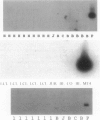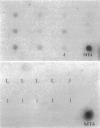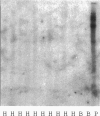Abstract
Several recent studies have reported detection of HTLV-I genetic sequences in patients with cutaneous T-cell lymphoma (CTCL) including mycosis fungoides and Sezary syndrome. The purpose of this study was to determine whether HTLV-I was detectable in lesional tissues of patients suffering from diseases known to be associated with CTCL. Thirty-five cases were obtained from diverse geographical locations including Ohio, California, Switzerland, and Japan. Six of them had concurrent CTCL. Cases were analyzed using a combination of genomic polymerase chain reaction (PCR)/ Southern blot, dot blot, and Southern blot analyses. All assays were specific for HTLV-I provirus. Sensitivity ranged from approximately 10(-6) for PCR-based studies to 10(-2) for unamplified genomic blotting. Lesional DNA from patients with lymphomatoid papulosis (fourteen cases), Hodgkin's disease (twelve cases), and CD30+ large-cell lymphoma (nine cases) was tested for the HTLV-I proviral pX region using a genomic PCR assay followed by confirmatory Southern blot analysis with a nested oligonucleotide pX probe. All cases were uniformly negative. All of the Hodgkin's disease cases, eight of the large-cell lymphoma cases, and six of the lymphomatoid papulosis cases were then subjected to dot blot analysis of genomic DNA using a full-length HTLV-I proviral DNA probe that spans all regions of the HTLV-I genome. Again, all cases were negative. Finally, eleven of the Hodgkin's disease cases were also subjected to Southern blot analysis of EcoRI-digested genomic DNA using the same full-length HTLV-I probe. Once again, all cases were negative. These findings indicated that, despite utilization of a variety of sensitive and specific molecular biological methods, HTLV-I genetic sequences were not detectable in patients with CTCL-associated lymphoproliferative disorders. These results strongly suggest that the HTLV-I retrovirus is not involved in the pathogenesis of these diseases.
Full text
PDF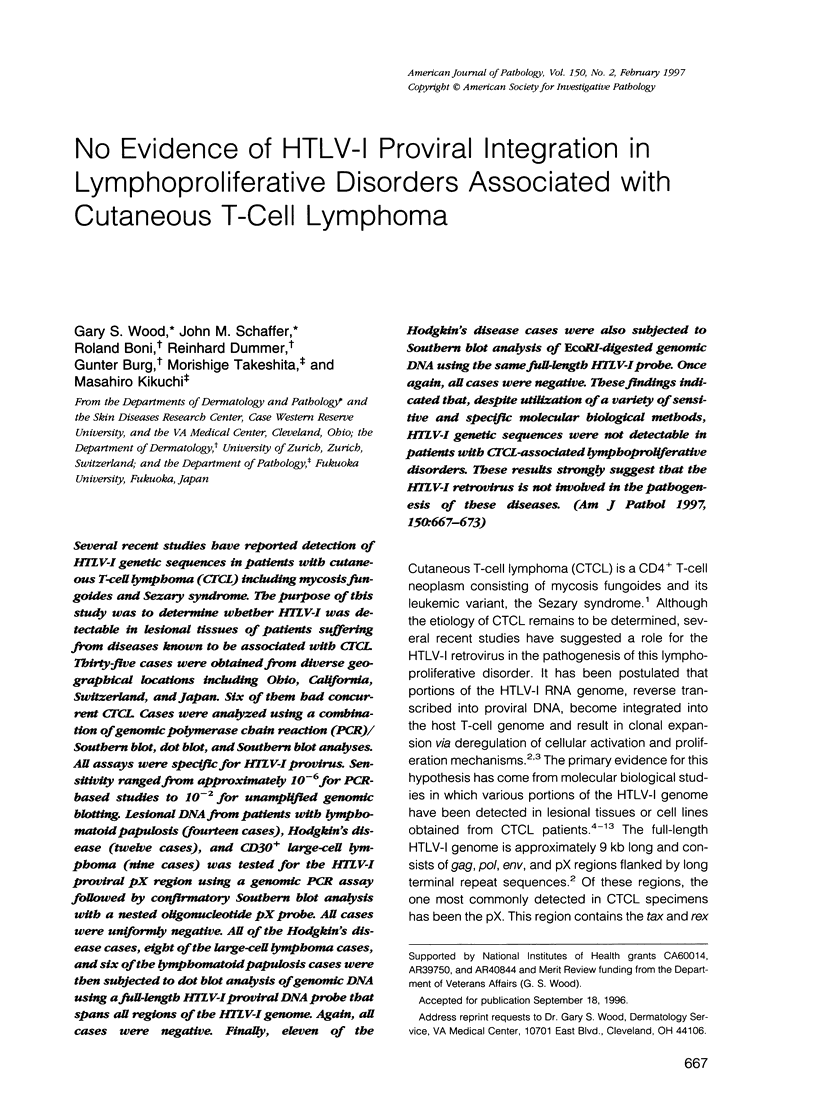
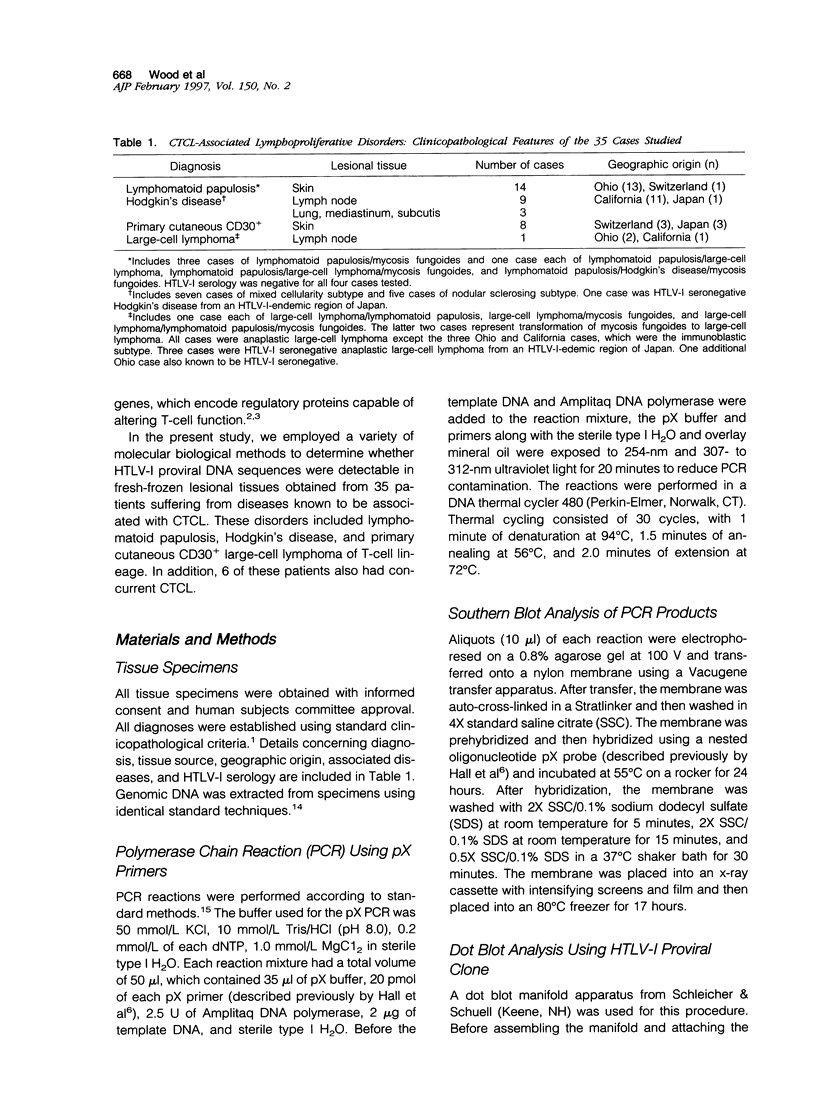
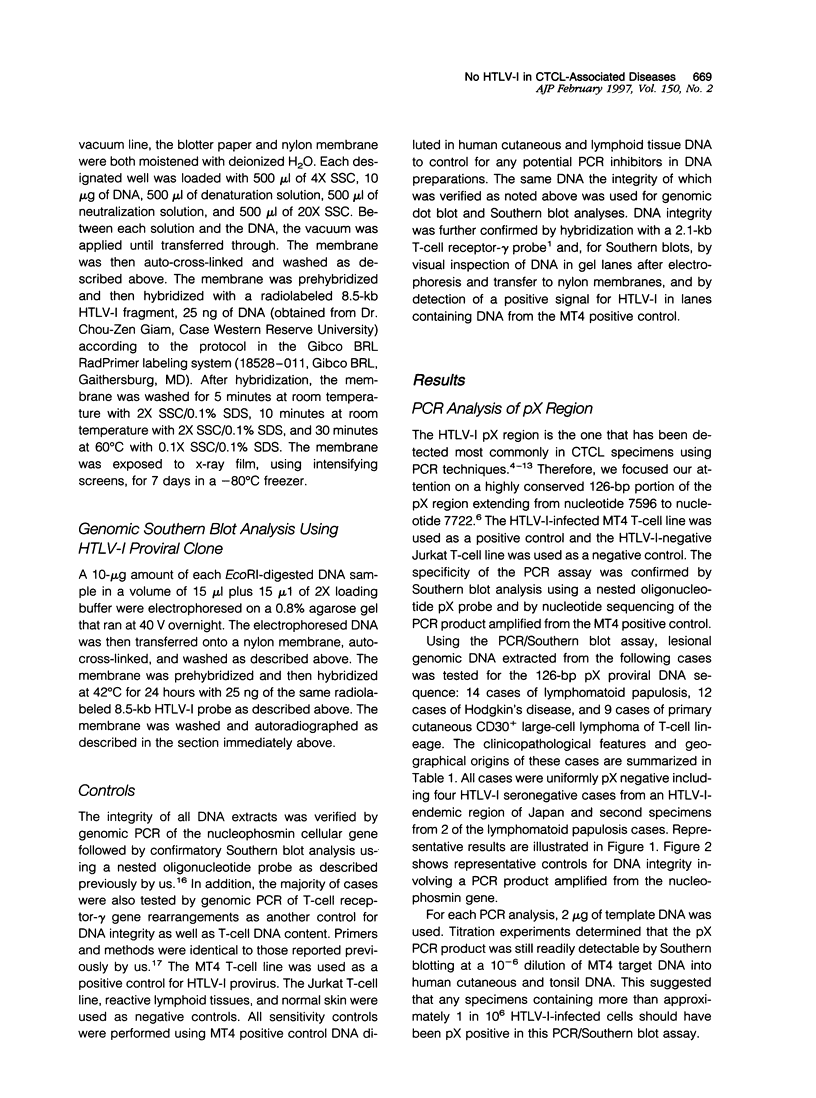
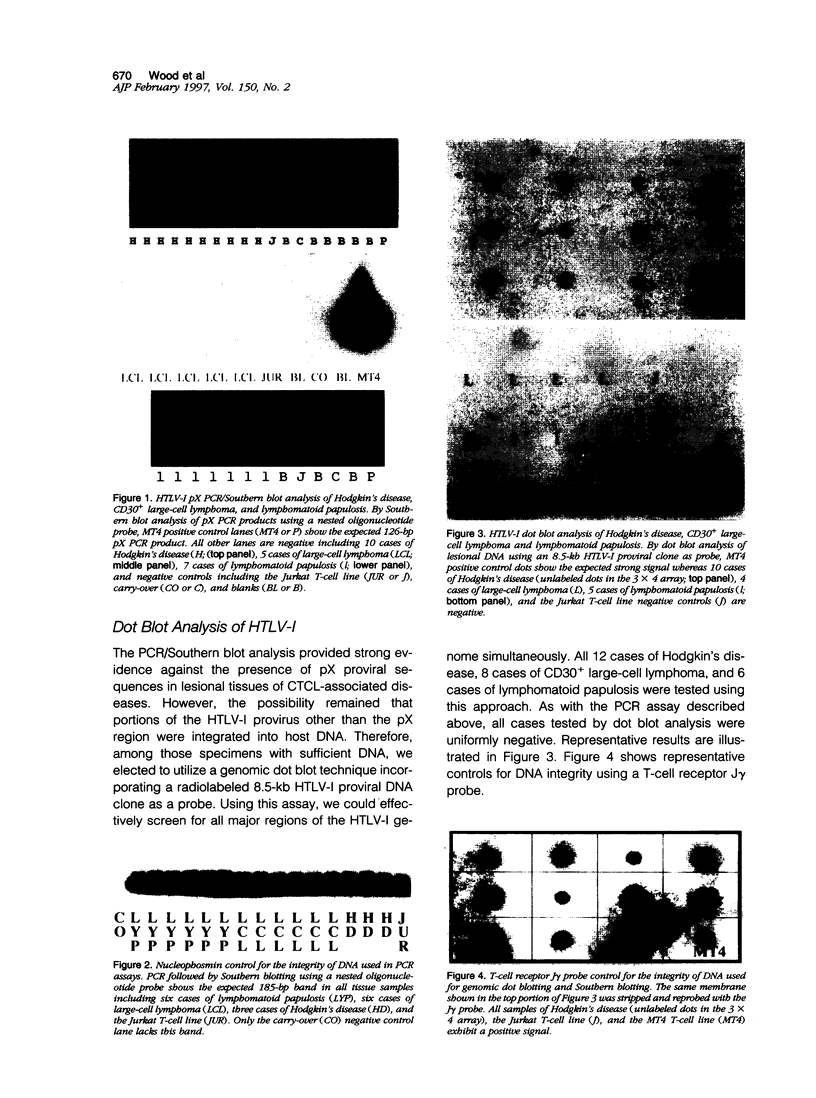
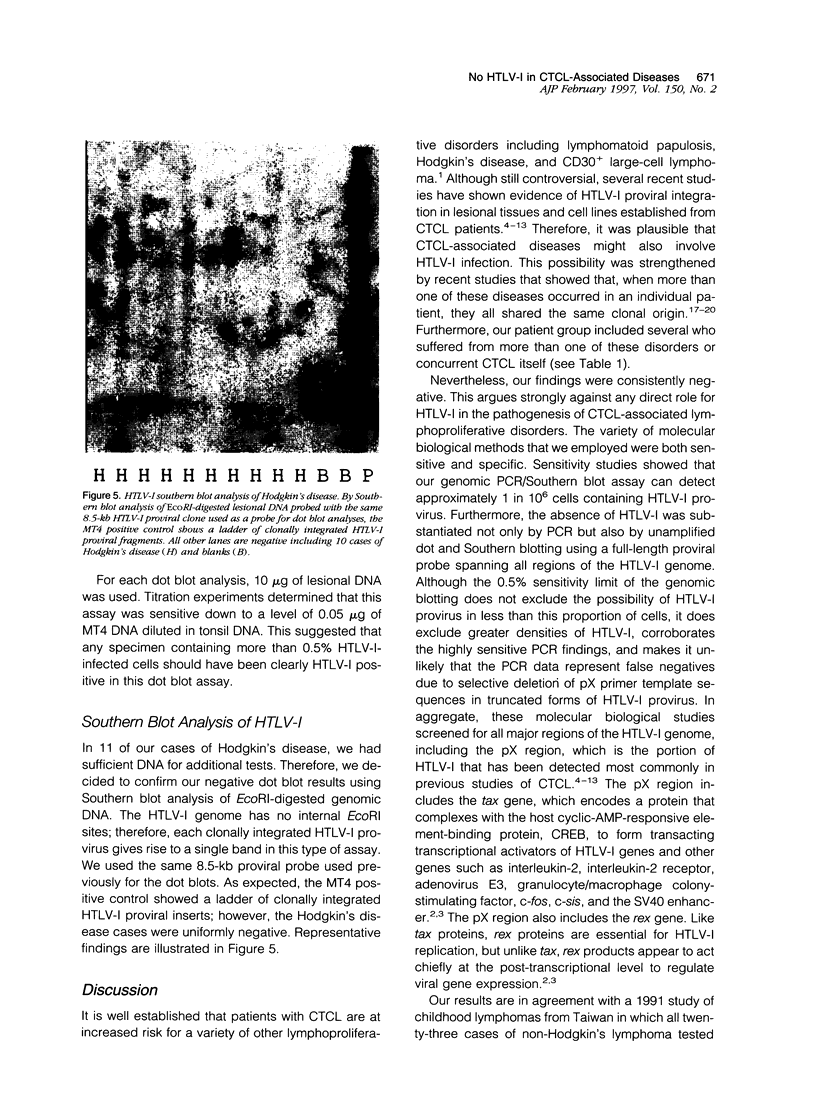
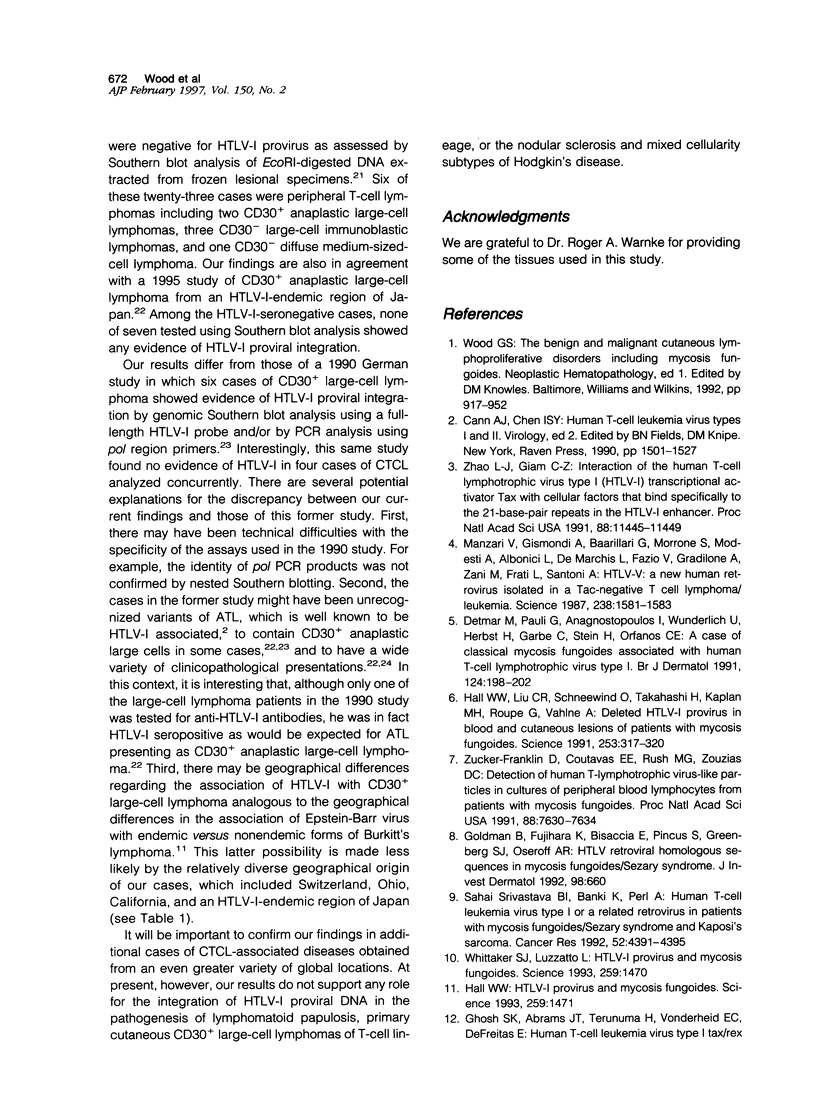
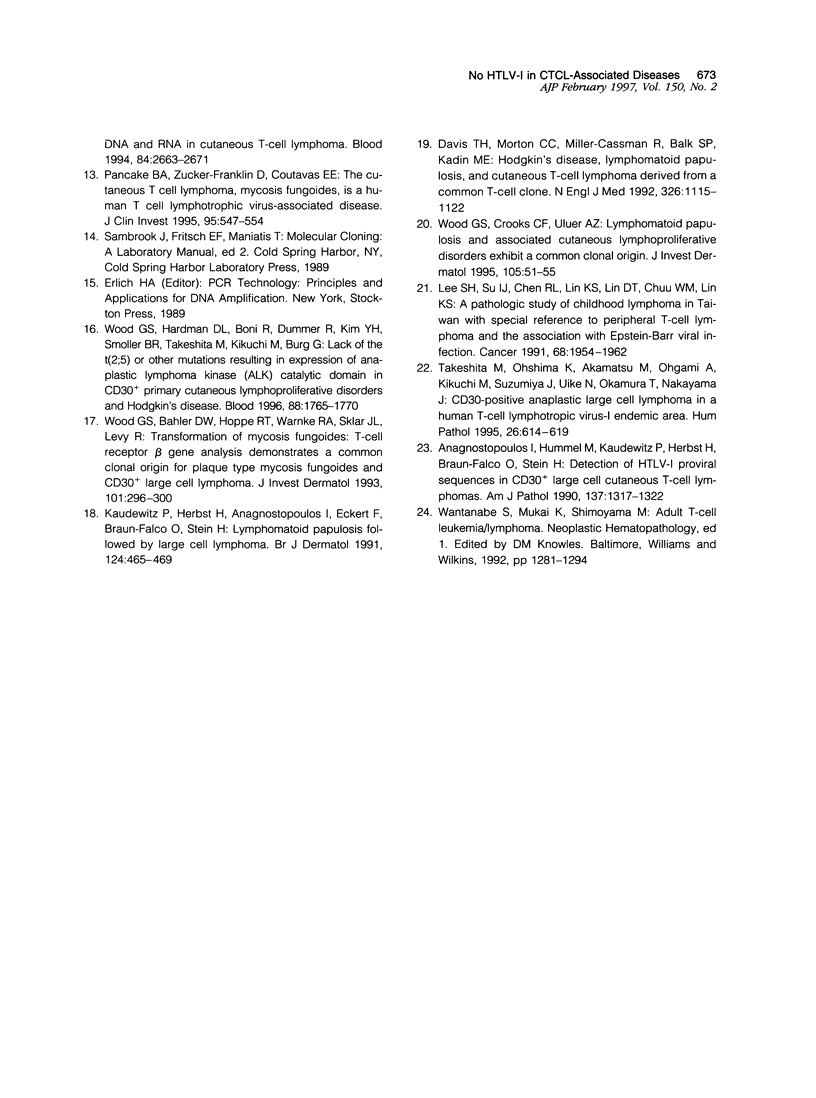
Images in this article
Selected References
These references are in PubMed. This may not be the complete list of references from this article.
- Anagnostopoulos I., Hummel M., Kaudewitz P., Herbst H., Braun-Falco O., Stein H. Detection of HTLV-I proviral sequences in CD30-positive large cell cutaneous T-cell lymphomas. Am J Pathol. 1990 Dec;137(6):1317–1322. [PMC free article] [PubMed] [Google Scholar]
- Davis T. H., Morton C. C., Miller-Cassman R., Balk S. P., Kadin M. E. Hodgkin's disease, lymphomatoid papulosis, and cutaneous T-cell lymphoma derived from a common T-cell clone. N Engl J Med. 1992 Apr 23;326(17):1115–1122. doi: 10.1056/NEJM199204233261704. [DOI] [PubMed] [Google Scholar]
- Detmar M., Pauli G., Anagnostopoulos I., Wunderlich U., Herbst H., Garbe C., Stein H., Orfanos C. E. A case of classical mycosis fungoides associated with human T-cell lymphotropic virus type I. Br J Dermatol. 1991 Feb;124(2):198–202. doi: 10.1111/j.1365-2133.1991.tb00434.x. [DOI] [PubMed] [Google Scholar]
- Hall W. W., Liu C. R., Schneewind O., Takahashi H., Kaplan M. H., Röupe G., Vahlne A. Deleted HTLV-I provirus in blood and cutaneous lesions of patients with mycosis fungoides. Science. 1991 Jul 19;253(5017):317–320. doi: 10.1126/science.1857968. [DOI] [PubMed] [Google Scholar]
- Hall W. W. Response. Science. 1993 Mar 5;259(5100):1471–1471. doi: 10.1126/science.259.5100.1471. [DOI] [PubMed] [Google Scholar]
- Kaudewitz P., Herbst H., Anagnostopoulos I., Eckert F., Braun-Falco O., Stein H. Lymphomatoid papulosis followed by large-cell lymphoma: immunophenotypical and genotypical analysis. Br J Dermatol. 1991 May;124(5):465–469. doi: 10.1111/j.1365-2133.1991.tb00627.x. [DOI] [PubMed] [Google Scholar]
- Lee S. H., Su I. J., Chen R. L., Lin K. S., Lin D. T., Chuu W. M., Lin K. S. A pathologic study of childhood lymphoma in Taiwan with special reference to peripheral T-cell lymphoma and the association with Epstein-Barr viral infection. Cancer. 1991 Nov 1;68(9):1954–1962. doi: 10.1002/1097-0142(19911101)68:9<1954::aid-cncr2820680918>3.0.co;2-e. [DOI] [PubMed] [Google Scholar]
- Manzari V., Gismondi A., Barillari G., Morrone S., Modesti A., Albonici L., De Marchis L., Fazio V., Gradilone A., Zani M. HTLV-V: a new human retrovirus isolated in a Tac-negative T cell lymphoma/leukemia. Science. 1987 Dec 11;238(4833):1581–1583. doi: 10.1126/science.2825353. [DOI] [PubMed] [Google Scholar]
- Pancake B. A., Zucker-Franklin D., Coutavas E. E. The cutaneous T cell lymphoma, mycosis fungoides, is a human T cell lymphotropic virus-associated disease. A study of 50 patients. J Clin Invest. 1995 Feb;95(2):547–554. doi: 10.1172/JCI117697. [DOI] [PMC free article] [PubMed] [Google Scholar]
- Srivastava B. I., Banki K., Perl A. Human T-cell leukemia virus type I or a related retrovirus in patients with mycosis fungoides/Sézary syndrome and Kaposi's sarcoma. Cancer Res. 1992 Aug 15;52(16):4391–4395. [PubMed] [Google Scholar]
- Takeshita M., Ohshima K., Akamatsu M., Ohgami A., Kikuchi M., Suzumiya J., Uike N., Okamura T., Nakayama J. CD30-positive anaplastic large cell lymphoma in a human T-cell lymphotropic virus-I endemic area. Hum Pathol. 1995 Jun;26(6):614–619. doi: 10.1016/0046-8177(95)90165-5. [DOI] [PubMed] [Google Scholar]
- Whittaker S. J., Luzzatto L. HTLV-1 provirus and mycosis fungoides. Science. 1993 Mar 5;259(5100):1470–1471. doi: 10.1126/science.8451645. [DOI] [PubMed] [Google Scholar]
- Wood G. S., Bahler D. W., Hoppe R. T., Warnke R. A., Sklar J. L., Levy R. Transformation of mycosis fungoides: T-cell receptor beta gene analysis demonstrates a common clonal origin for plaque-type mycosis fungoides and CD30+ large-cell lymphoma. J Invest Dermatol. 1993 Sep;101(3):296–300. doi: 10.1111/1523-1747.ep12365416. [DOI] [PubMed] [Google Scholar]
- Wood G. S., Crooks C. F., Uluer A. Z. Lymphomatoid papulosis and associated cutaneous lymphoproliferative disorders exhibit a common clonal origin. J Invest Dermatol. 1995 Jul;105(1):51–55. doi: 10.1111/1523-1747.ep12312548. [DOI] [PubMed] [Google Scholar]
- Wood G. S., Hardman D. L., Boni R., Dummer R., Kim Y. H., Smoller B. R., Takeshita M., Kikuchi M., Burg G. Lack of the t(2;5) or other mutations resulting in expression of anaplastic lymphoma kinase catalytic domain in CD30+ primary cutaneous lymphoproliferative disorders and Hodgkin's disease. Blood. 1996 Sep 1;88(5):1765–1770. [PubMed] [Google Scholar]
- Zhao L. J., Giam C. Z. Interaction of the human T-cell lymphotrophic virus type I (HTLV-I) transcriptional activator Tax with cellular factors that bind specifically to the 21-base-pair repeats in the HTLV-I enhancer. Proc Natl Acad Sci U S A. 1991 Dec 15;88(24):11445–11449. doi: 10.1073/pnas.88.24.11445. [DOI] [PMC free article] [PubMed] [Google Scholar]
- Zucker-Franklin D., Coutavas E. E., Rush M. G., Zouzias D. C. Detection of human T-lymphotropic virus-like particles in cultures of peripheral blood lymphocytes from patients with mycosis fungoides. Proc Natl Acad Sci U S A. 1991 Sep 1;88(17):7630–7634. doi: 10.1073/pnas.88.17.7630. [DOI] [PMC free article] [PubMed] [Google Scholar]



